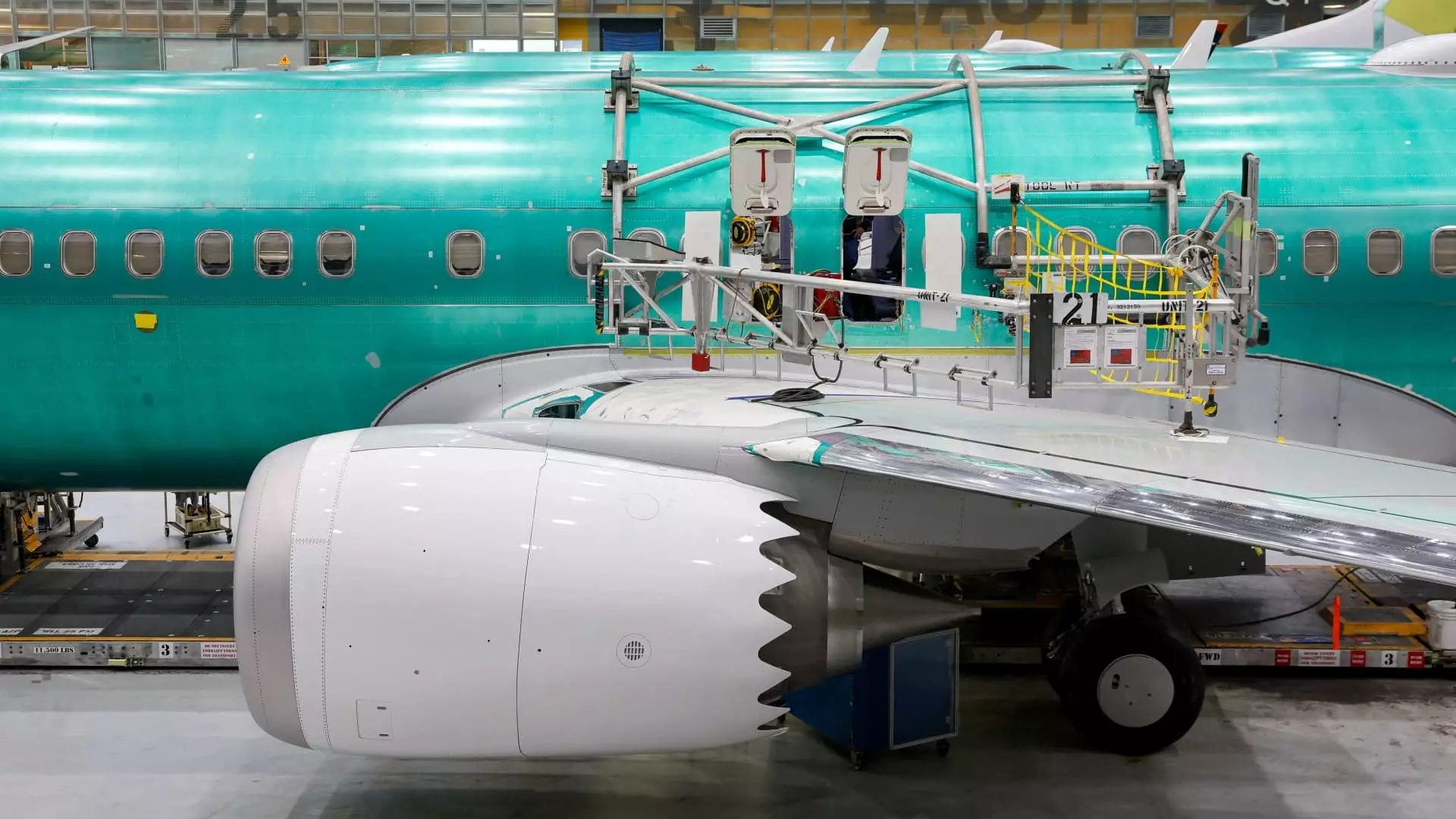Boeing, a cornerstone of the aerospace industry and a prominent figure in U.S. manufacturing, finds itself navigating a turbulent phase marked by crises of quality, safety, and public trust. The challenges Boeing faces today are not just the lingering repercussions of past errors but also the need for a comprehensive overhaul in its organizational culture and operational practices. As the company embarks on what it hopes will be a transformative journey towards recovery, it is essential to analyze the myriad factors influencing its current trajectory.
In the past year, Boeing reluctantly returned to the spotlight, under scrutiny for grave concerns regarding safety and quality. The incident involving an Alaska Airlines’ Boeing 737 Max 9, where a fuselage panel dislodged mid-flight due to negligence in quality assurance, crystallized fears around the company’s operational competencies. Fortunately, no serious injuries were reported, but the incident served as a stark reminder of Boeing’s vulnerabilities. This mishap not only jeopardized the safety of passengers but also reinforced the criticism leveled at the company regarding its quality controls. It has become painfully clear that Boeing still bears the scars of two catastrophic crashes of the 737 Max, which resulted in the loss of 346 lives and led to the prolonged grounding of the aircraft model.
Boeing’s stock has endured a staggering decline, plummeting over 30% in the last year while broader market indexes like the S&P 500 have risen by nearly 27%. This stark contrast speaks volumes about investor confidence and reflects the perception that Boeing’s path to recovery will be fraught with challenges. With its market performance so closely tied to operational integrity and public perception, Boeing is under immense pressure to rebuild not just its business metrics, but also its corporate reputation.
Recognizing the need for significant changes, Boeing has initiated a series of leadership transformations. The recent appointment of Kelly Ortberg as the new CEO marks a pivotal moment for the organization, as he brings decades of aerospace experience to the table. Ortberg’s mandate is clear: reinvigorate Boeing’s production capabilities while emphasizing safety and quality. His vision is endorsed by industry executives who have grown impatient with Boeing’s uneven delivery performance.
To address these ongoing quality concerns, the firm has ramped up efforts in staff training and instituted random quality audits in its manufacturing facilities. These initiatives are steps in the right direction, but the road ahead will require unwavering commitment to ensuring that such oversights do not recur.
A recurring theme from regulatory bodies, particularly the Federal Aviation Administration (FAA), has been the urgent need for a cultural shift within Boeing. Emphasizing safety and quality as paramount over profits, FAA chief Mike Whitaker has underscored the necessity for a sustainable and profound transformation within the organization. The increased oversight from the FAA, including production caps on the 737 Max, signals that compliance and trust must be earned anew, presenting an uphill battle for Boeing as it strives to regain its footing.
Drawing from past mistakes, it is crucial for Boeing to nurture an environment of transparency, accountability, and innovation. Employees play an integral role in this evolution, and the company must actively engage them in dialogues regarding quality standards. Listening to frontline workers can often yield insights that top executives might overlook from their lofty vantage points.
Boeing’s challenges are compounded by external competitive pressures, particularly from rivals like Airbus, which have been consistently outperforming in aircraft delivery volumes. While Boeing’s new strategic initiatives and workforce reductions aim to streamline operations and restore profitability—demonstrated through Ortberg’s announcement to cut about 10% of its workforce—strategic limiting may also introduce further risks in meeting growing demand in the post-pandemic aviation landscape.
Boeing’s current strategy to stabilize its operations before accelerating production is sensible, yet it is fraught with uncertainty. As the company enters a rebuilding phase, it must remain vigilant about its shortcomings and the implications of every decision it makes. The journey to recovery will not be achieved overnight. Instead, it will be defined by sustained effort, genuine commitment to quality and safety, and a reimagined corporate ethos that prioritizes enduring principles over transient gains.
Boeing stands at a critical juncture. Its path forward demands not just vigilance and resolve, but also a profound reevaluation of its core principles in the face of mounting pressures. With effective leadership and a commitment to operational excellence, Boeing can work towards reinstating its place as a trusted leader in the aerospace sector, although the road to recovery will undoubtedly be complex and lengthy.


Leave a Reply